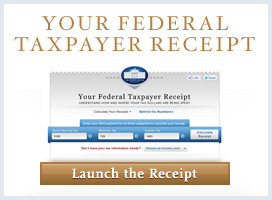Saving for Retirement – Making It Easy and Simple
Posted by on September 05, 2009 at 07:00 AM EDT
One of the most compelling examples of the explanatory power of behavioral economics is the sometimes dramatic effects of small changes in making it easier to save for retirement. In this morning’s weekly address, the President highlighted four proposals to do just that. These common-sense changes include allowing more workers at small businesses to automatically enroll in a 401(k) or an IRA; making it easier to direct part of a tax refund into a retirement account; facilitating the direct deposit of lump sum payments, such as income tax rebates and payments for unused vacation and other leave days, into a retirement account; and creating plain-English, easy-to-understand guides on-line into the very complicated world of savings.
A significant and growing body of evidence shows that these types of changes can make a significant difference in savings outcomes – which in turn can help workers prepare for a more secure retirement. Take the effect of automatic enrollment on participation in employer-sponsored retirement plans. (Go here for an article I co-authored on the topic while at the Retirement Security Project.) A number of studies have demonstrated the substantial increase in participation from making enrollment automatic (with the option to turn down participation), rather than making non-enrollment the default (with the option to participate). The effect is particularly dramatic among low-income workers, who otherwise have very low participation rates. A 2007 survey by the Vanguard Center for Retirement Research found that 45 percent of newly hired workers participated in a 401(k) plan when doing so required them to opt in, but 86 percent participated when enrollment was automatic. Among those earning less than $30,000, 25 percent of new workers opted in under the traditional approach, but 77 percent participated when automatically enrolled.
A significant and growing body of evidence shows that these types of changes can make a significant difference in savings outcomes – which in turn can help workers prepare for a more secure retirement. Take the effect of automatic enrollment on participation in employer-sponsored retirement plans. (Go here for an article I co-authored on the topic while at the Retirement Security Project.) A number of studies have demonstrated the substantial increase in participation from making enrollment automatic (with the option to turn down participation), rather than making non-enrollment the default (with the option to participate). The effect is particularly dramatic among low-income workers, who otherwise have very low participation rates. A 2007 survey by the Vanguard Center for Retirement Research found that 45 percent of newly hired workers participated in a 401(k) plan when doing so required them to opt in, but 86 percent participated when enrollment was automatic. Among those earning less than $30,000, 25 percent of new workers opted in under the traditional approach, but 77 percent participated when automatically enrolled.
Many employers have responded to these findings by changing the defaults in their 401(k) plans to opt-out rather than opt-in. Workers who aren’t offered employer-sponsored plans like 401(k)s, however, have not benefited from these changes. For such workers, expanding access to automatic savings—through plans like the automatic IRA, mentioned today by the President and included in the FY 2010 Budget—is a promising approach.
Another promising approach is the use of the tax system as a platform for implementing savings policy. A paper prepared for the National Tax Association’s 2009 Spring Symposium highlights the "attractive automaticity" of the payroll tax system for improving program take-up. According to the authors, a preponderance of evidence suggests that people’s natural tendency to procrastinate coupled with even minor barriers to taking up programs—waiting time, tedious applications, understanding program rules—can disproportionately discourage program participation. Yet nearly all workers file income tax returns, many tax filers receive refunds, and a growing share receives refunds via direct deposit. For many Americans, the federal income tax rebate is the biggest paycheck that they receive all year. The tax system thus opens up a "saveable moment"—directing refunds towards a retirement account where funds will be saved rather than a checking account where funds will be spent is a relatively small decision and can be accomplished with a check of a box. (I would note that one of the authors of this paper, Sendhil Mullinathan, has joined the OMB team for the upcoming year—an exciting addition to the staff as we consider how to apply behavioral economics across a range of policy questions.)
These proposals are being put forward by the President because as we build a new foundation for economic growth, we need to invest in what works – and for retirement saving, that is often through making it easier and simpler.
White House Blogs
- The White House Blog
- Middle Class Task Force
- Council of Economic Advisers
- Council on Environmental Quality
- Council on Women and Girls
- Office of Intergovernmental Affairs
- Office of Management and Budget
- Office of Public Engagement
- Office of Science & Tech Policy
- Office of Urban Affairs
- Open Government
- Faith and Neighborhood Partnerships
- Social Innovation and Civic Participation
- US Trade Representative
- Office National Drug Control Policy
categories
- AIDS Policy
- Alaska
- Blueprint for an America Built to Last
- Budget
- Civil Rights
- Defense
- Disabilities
- Economy
- Education
- Energy and Environment
- Equal Pay
- Ethics
- Faith Based
- Fiscal Responsibility
- Foreign Policy
- Grab Bag
- Health Care
- Homeland Security
- Immigration
- Innovation Fellows
- Inside the White House
- Middle Class Security
- Open Government
- Poverty
- Rural
- Seniors and Social Security
- Service
- Social Innovation
- State of the Union
- Taxes
- Technology
- Urban Policy
- Veterans
- Violence Prevention
- White House Internships
- Women
- Working Families
- Additional Issues

